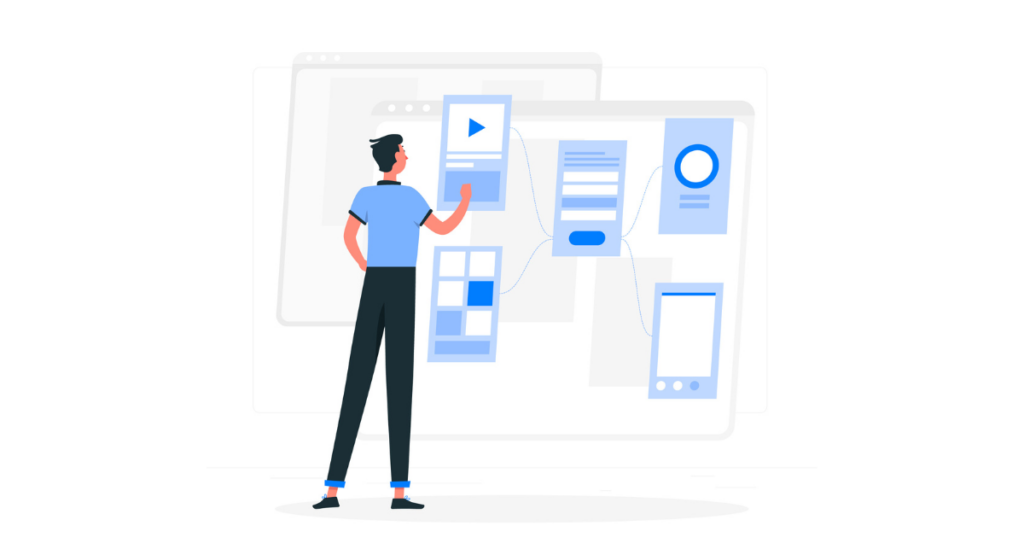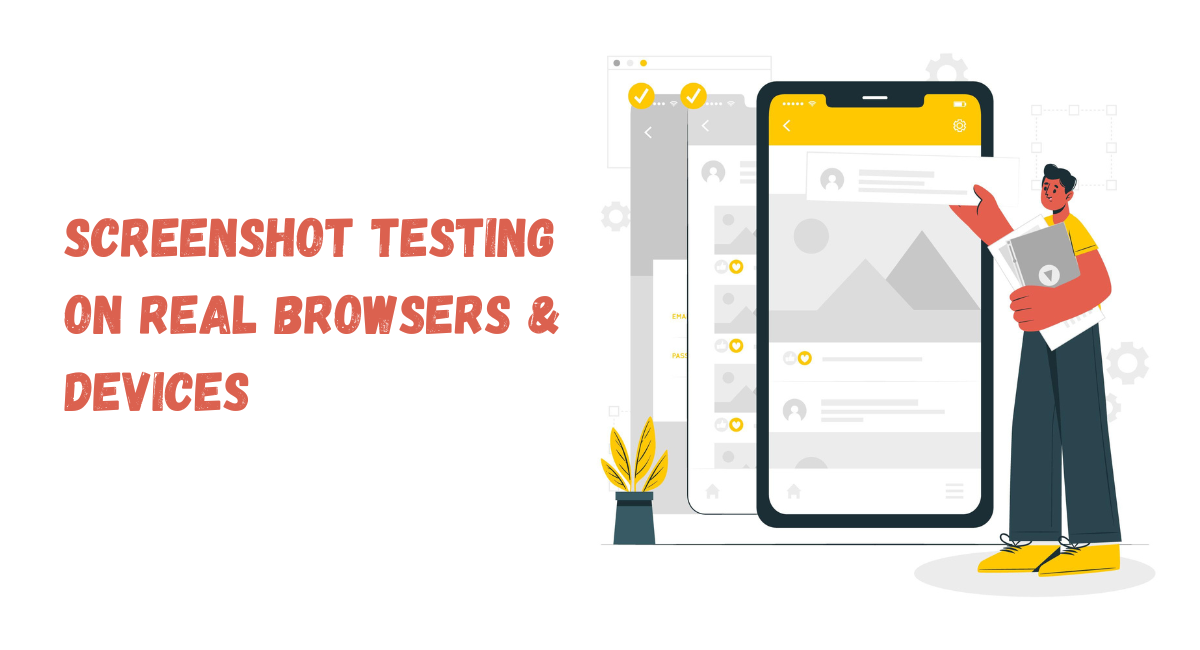It is among the most required techniques for testing the UI features of websites and applications on different browsers and devices.
Screenshot testing is what lets developers and QA teams capture snapshots against their application under various conditions to make sure that its behavior and look-and-feel are invariant.
That means ensuring compatibility and maintaining visuals is important due to the plethora of devices and web browsers available at users' disposal while accessing digital content.
Such testing will not only highlight cosmetic issues but also functional differences that may affect user interaction with the difference on varied platforms.
Building screenshot testing into the development cycle helps companies achieve a higher order of quality assurance making sure that the user experience is consistent and fluid across all devices and browsers.
Importance of Screenshot Testing On Real Browsers & Devices

Validating Visual Aspects
Screenshot testing plays a crucial role in validating the visual aspects of web applications across various browsers and devices.
This process ensures that each visual element appears as intended, providing confidence in both the design and functionality of your site.
By capturing and analyzing screenshots, developers can identify discrepancies such as misaligned text, incorrect color rendering, or broken layouts that may only manifest on specific devices or browser versions.
Visual validation aids in the early detection of potentially costly design flaws that could detract from user experience.
Ensuring Cross-Browser Compatibility
Cross-browser compatibility is really important in today's fragmented tech environment it's when a user accesses web applications with a myriad of different browsers and devices.
Screenshot testing on real devices and browsers puts applications through their paces and ensures uniformity, regardless of the user's choice of technology.
This may vary from one browser to another and differ in aspects such as CSS, rendering, HTML structure interpretation, and JavaScript execution.
These variations could be detected and fixed using screenshot testing to ensure a smooth and consistent user experience across all platforms.
Benefits of Testing Automation
Efficiency in QA Process
Integrating screenshot testing into an automated quality assurance (QA) process dramatically enhances overall efficiency. Automation allows for the rapid execution of tests that would typically consume considerable time if performed manually.
This can include the simultaneous testing of multiple browser-device combinations, exponentially speeding up the validation process.
Automated processes also facilitate the implementation of continuous integration and delivery pipelines, allowing teams to detect and resolve issues faster and more reliably.
Improved Accuracy in Test Results
Automated screenshot testing is more precise than manual testing, given that it excludes human error. That is, the automated tests will run the same actions, in the same order, every time, allowing for reproducibility of test conditions and reliability in the results.
This accuracy is helpful in testing the visual elements of multiple browsers and devices by ensuring that deviations from the expected result are actual bugs and not caused by a difference introduced by some type of human error.
Time and Cost Savings
With automation in screenshot testing, other than increasing the speed and accuracy of tests, it gives a lot of time and cost savings.
By automating some of the tedious tasks, this enables the organization to better optimize their resources and channel human efforts towards tasks that need critical thinking and creativity in problem solving.
Also, faster identification and fixing reduce the need for extended post-release fixes and diminish the hazard to brand reputation, having long-term financial benefits.
Advantages of Utilizing Real Devices

Authentic User Experience
Commerce apps, being tested on real devices, will have the closestaporan of how users live with an application in their day-to-day lives.
It empowers developers and testers to consume the application in various real-world environments, network conditions, and operating systems as the end-user would.
Compared with simulators or emulators that would simulate behaviors on devices, real devices show an application's performance and usability exactly as it is.
This comprises detailed layouts, graphics, and animation what a real user would see. This means shifting more integration testing to actual devices in order to ensure that the delivered end product is user-friendly and can hold its own in the live environment.
Identifying Device-Specific Issues
One of the key reasons to conduct screenshot testing on real devices is to identify issues that occur only on specific devices or in specific contexts. These might include:
- Touchscreen responsiveness
- Hardware interaction (such as camera, accelerometer, GPS)
- Software features utilization (like push notifications, background apps)
- Battery usage and power management
- Heat dissipation behaviors under continuous use
To ensure a high quality user experience, it's pivotal that these device-specific factors are thoroughly tested and optimized, which is only possible through testing on actual hardware.
Best Practices for Cross-Browser Screenshot Testing
Choosing the Right Testing Tools
Choosing the right tools for this task at hand is important in screenshot testing.
Testing tools should be able to capture and compare screenshots across many browsers and different devices, but also integrate into the existing continuous integration/continuous deployment pipeline.
Other key features would include support for multiple browser versions, ease of use, and strong reporting.
Tools at the forefront in meeting these objectives include Selenium, BrowserStack, and Sauce Labs, which supports a wide variety of automation features that facilitate extensive cross-browser testing.
Creating Comprehensive Test Suites
Developing a comprehensive test suite involves defining a range of scenarios that the app might encounter in various browser environments. It is essential to:
- Cover all critical visual elements of the application
- Include variations in screen resolutions and orientations
- Test against both new and legacy browser versions to ensure backward compatibility
In addition, prioritizing which browsers and devices to test against based on analytics (such as user base and target audience) can make testing efforts more directed and fruitful.
Regular updates and maintenance of test cases as the application evolves are also critical to keeping the tests relevant and effective.
By following these practices, teams can ensure that their applications provide a consistent and appealing visual experience across all supported browsers.
Common Challenges and How to Overcome Them
Handling Dynamic Content
Dynamic content, which changes based on user interaction or time, presents a particular challenge in screenshot testing.
Items such as ads, pop-ups, or user-specific information can vary each time a page is loaded, leading to inconsistencies in test results. To mitigate this, implement strategies such as:
- Stabilizing the environment: Ensure that tests run in a controlled setting where dynamic elements are minimized or standardized.
- Using placeholders: Replace dynamic content with static placeholders during testing to maintain consistency.
- Employing advanced tools: Utilize tools that can intelligently detect and manage dynamic content, adjusting the testing process accordingly.
These approaches help achieve more stable and reliable screenshot testing outcomes, even in environments rich in dynamic content.
Dealing with Browser Version Differences
Cross-browser compatibility is crucial as different users access web applications through various browsers and versions. Here are effective strategies to handle browser version variations in screenshot testing:
- Regular updates: Keep your testing tools and browser versions up to date to cover recent changes and features.
- Using browser normalization techniques: Implement techniques that normalize rendering differences across browsers to reduce discrepancies in screenshots.
- Leverage cloud-based platforms: Access a wider range of real browsers and versions through cloud-based testing platforms, enabling comprehensive testing without requiring a massive in-house browser farm.
These methods ensure that your application provides a consistent user experience across all supported browsers and versions, which is key to retaining and expanding your user base.
Book a Demo and experience ContextQA testing platform in action with a complimentary, no-obligation session tailored to your business needs.
Conclusion
In an era where digital interfaces span a vast array of devices and browsers, the importance of screenshot testing cannot be overstated.
Implementing this testing strategy ensures that every user, regardless of their choice of technology, experiences your software as intended.
Real browsers and devices provide the most accurate results, reflecting true user interactions and environments. Automating this process further enhances efficiency, reduces errors, and maintains consistency across all platforms.
By integrating real device and browser screenshot testing into your development cycle, you secure an edge in delivering a universally positive user experience, boosting satisfaction and engagement among your users.
Also Read - Manual Testing Tutorial for Beginners
